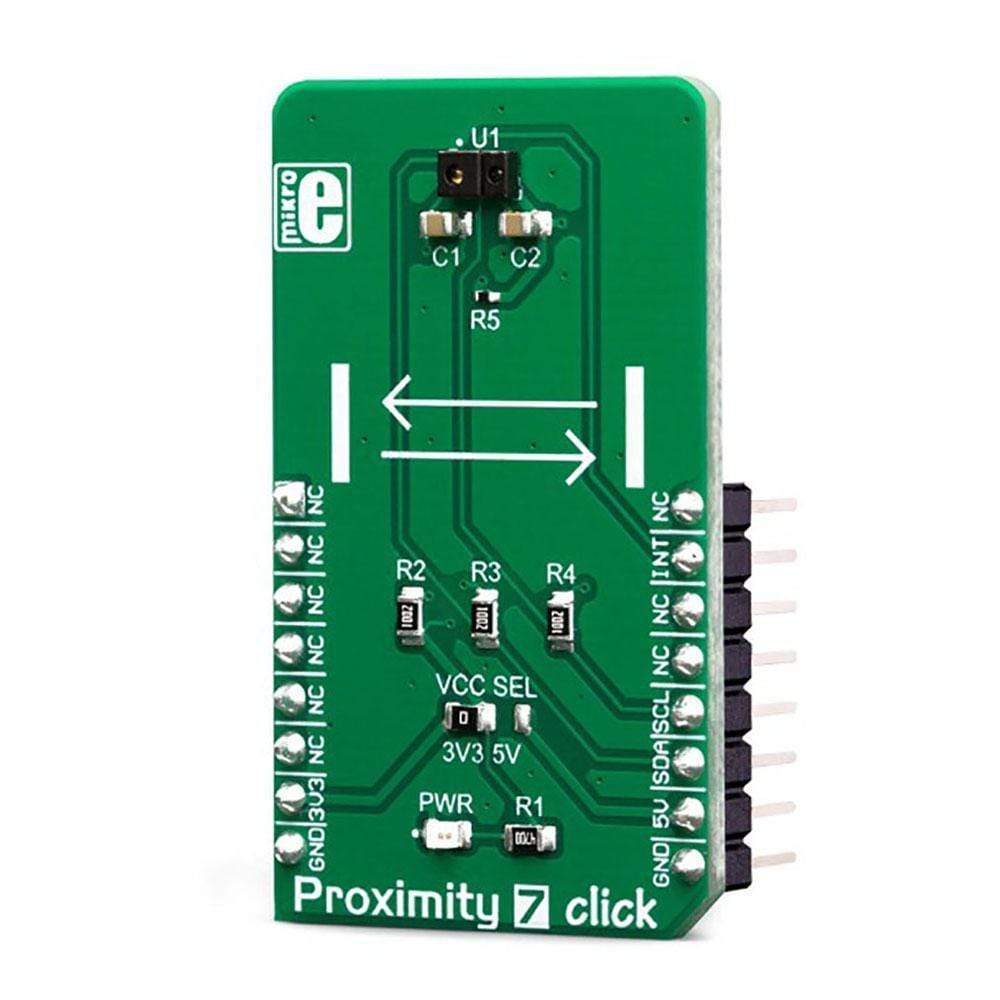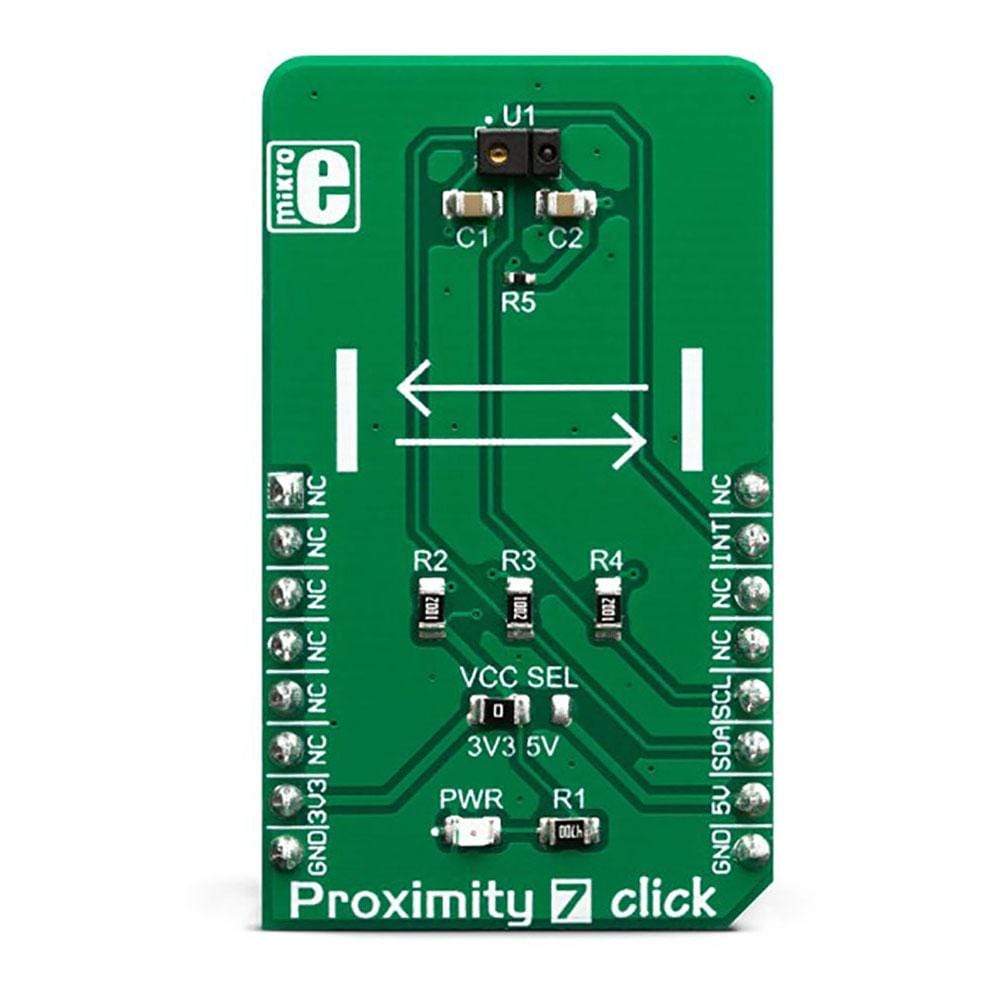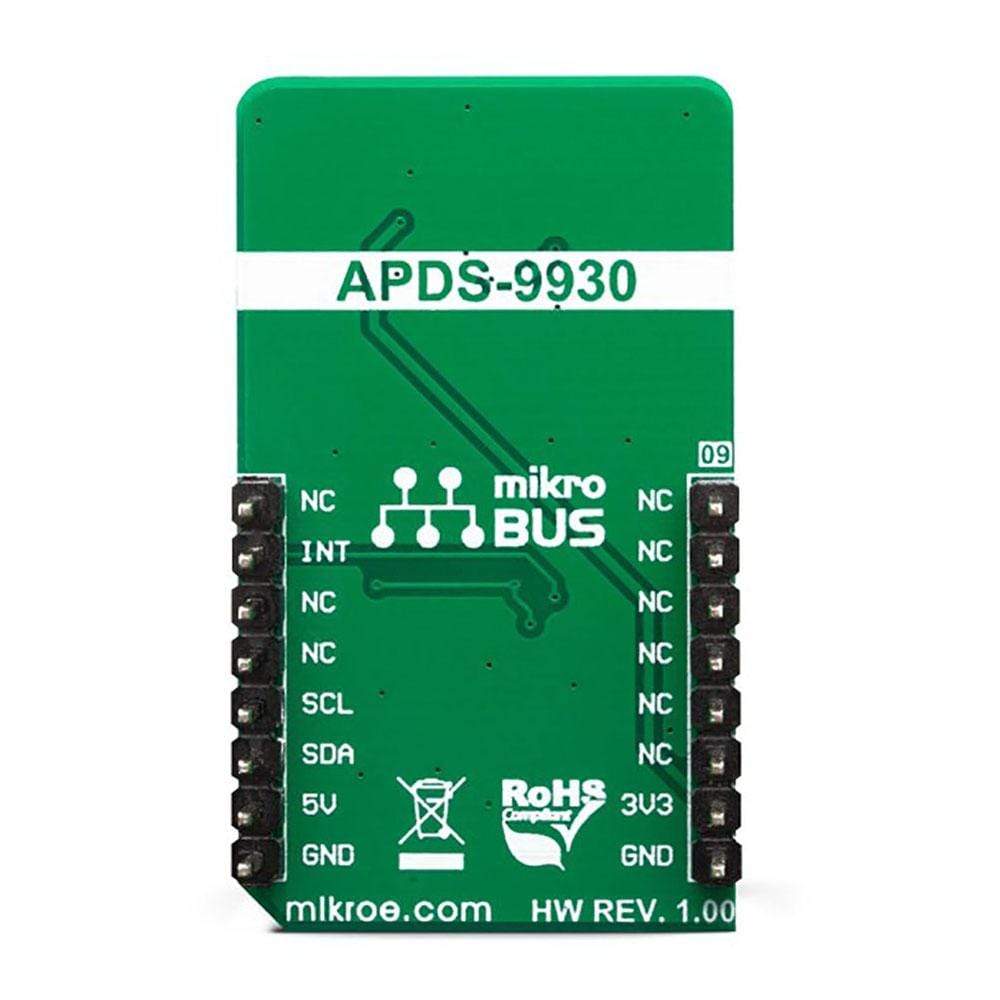


Overview
The Proximity 7 Click Board™ is advanced proximity and ambient light sensing Click Board™. It features the ADPS9930, a digital sensor IC equipped with two photodiodes (PD) and an IR LED, driven by a proprietary LED driver circuit. It allows accurate proximity detection for a maximum distance of 100mm. The proprietary LED current driving technique eliminates the need for calibration, simplifying the design. A huge dynamic range allows ambient light sensing closely matched to the response of the human eye, in a variety of light conditions. An extensive interrupt engine allows for firmware optimisation.
Downloads
Le tableau à clic Proximity 7™ est un Click Board™ de détection de proximité et de lumière ambiante avancé. Il comprend l' ADPS9930 , un circuit intégré de capteur numérique équipé de deux photodiodes (PD) et d'une LED IR, piloté par un circuit de commande de LED propriétaire. Il permet une détection de proximité précise sur une distance maximale de 100 mm. La technique de pilotage de courant LED propriétaire élimine le besoin d'étalonnage, simplifiant ainsi la conception. Une vaste plage dynamique permet une détection de lumière ambiante étroitement adaptée à la réponse de l'œil humain, dans diverses conditions d'éclairage. Un moteur d'interruption étendu permet l'optimisation du micrologiciel.
| General Information | |
|---|---|
Part Number (SKU) |
MIKROE-3330
|
Manufacturer |
|
| Physical and Mechanical | |
Weight |
0.022 kg
|
| Other | |
Country of Origin |
|
HS Code Customs Tariff code
|
|
EAN |
8606018714322
|
Warranty |
|
Frequently Asked Questions
Have a Question?
Be the first to ask a question about this.



